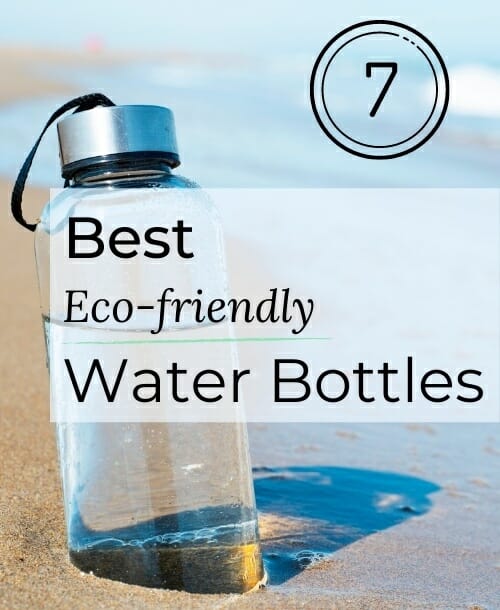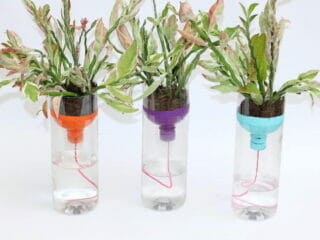
On this Page
This image might be comical to some, but plastic pollution is no laughing matter.
In the 1960s, plastic items like grocery bags became common in stores nationwide. Later that decade, we observed the first plastic debris making its way into the ocean. Since then, the use of disposable plastics (like straws, bags, and cups) has grown as society seeks more and more convenience.
Living sustainably demands more effort, but it’s a pay-now-or-pay-later deal. Unfortunately, most of society would rather pay later. But that has led to the environmental crisis we face today.
These plastics don’t just disappear. Most take 500+ years to decompose. Think of it this way: the first plastic items ever made still exist today. And only about 5% to 6% of plastics thrown into recycling bins are recycled each year in the US.
Let’s dive deeper into the risks of plastic pollution and offer 18 tips to reduce it.
Plastic in the Ocean: The Great Pacific Garbage Patch Explained
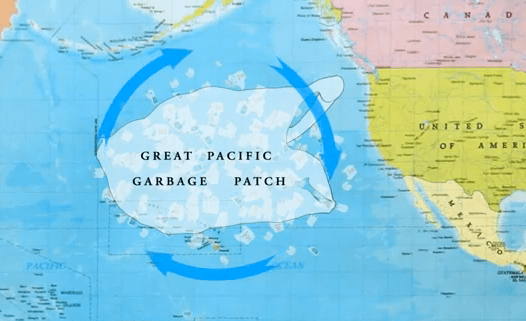
The Great Pacific Garbage Patch is the largest of the world’s five offshore plastic accumulation zones. It’s located halfway between Hawaii and California and contains a large percentage of ocean plastic.
There are approximately 80,000 tonnes of plastic in the GPGP, 4-16 times more than previous calculations. This weight is also equivalent to that of 500 Jumbo Jets.
The vast majority of plastics retrieved consisted of polyethylene (PE), polypropylene (PP), or derelict fishing gear (nets and ropes). The plastics range from small fragments to meter-sized fishing nets.
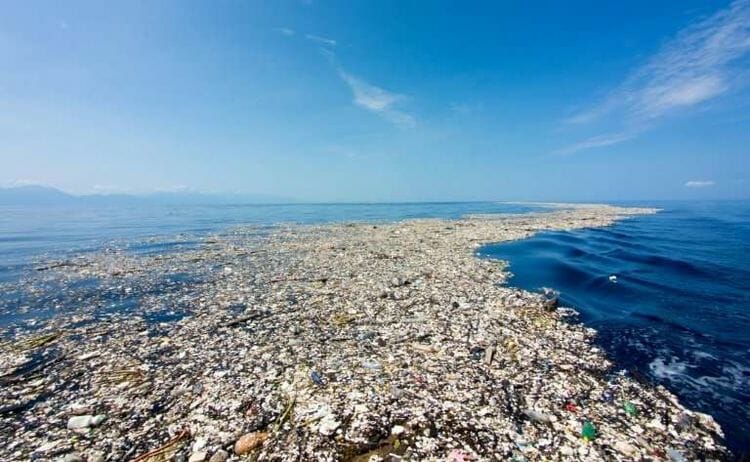
Plastic Pollution Facts and Effects on Life
Not only does plastic pollution in the Great Pacific Garbage Patch pose risks to the safety and health of marine animals, but there are health and economic implications for humans, too.
Plastic is a ubiquitous substance. Due to its size and color, animals confuse plastic for food, causing malnutrition; it poses entanglement risks and threatens their overall behavior, health, and existence. Once plastic enters the marine food web, it can contaminate the human food chain as well.
Efforts to clean and eradicate ocean plastic have also caused significant financial burdens.
Through feeding, plastic chemicals enter the animal’s body. As the feeder becomes the prey, the chemicals will pass to the predator – making their way up the food chain, including humans.

Solutions: 18 Ways to Prevent Plastic Waste
If you are politically active, you can push your local congress to make tighter laws concerning single-use plastics.
Dozens of cities have already established bans or restrictions on using plastic straws in restaurants, and legislators in several states (including NJ, where I reside) have banned plastic bags altogether.
For those who aren’t into politics but want to reduce our plastic usage, here are 18 tips to help you out:
- Stop using plastic straws, even in restaurants. If a straw is necessary, grab a reusable stainless steel or glass straw.
- Use a reusable produce bag. A single plastic bag can take 1,000 years to degrade. Purchase or make your own reusable produce bag, and wash them often!
- Give up gum. Gum is made of synthetic rubber, a.k .a. plastic.
- Buy boxes instead of bottles. Products like laundry detergent powder often come in cardboard, which is easier to recycle than plastic.
- Buy food, like cereal, pasta, and rice, from bulk bins and fill a reusable bag or airtight glass jars. You save money and unnecessary packaging.
- Reuse containers for storing leftovers or shopping in bulk.
- Use a reusable bottle or mug for your beverages, even when ordering from a to-go shop.
- Bring your reusable container for takeout since many restaurants use styrofoam.
- Lighters. Use matches instead of disposable plastic lighters, or invest in a refillable steel Zippo.
- Avoid buying frozen foods because their packaging is mostly plastic. Even those that appear to be cardboard use a thin plastic layering. Plus, you’ll be eating fewer processed foods as a side bonus!
- Don’t use plastic utensils at home. When ordering takeout, request the restaurant to avoid packing them with your order.
- Ask your local grocer to take your plastic containers back. They can refill it if you shop at a farmer’s market.
- Use cloth diapers to reduce your carbon footprint and save money. The EPA estimates that 7.6 billion pounds of disposable diapers are discarded annually in the US.
- Make fresh-squeezed juice instead of buying it in plastic bottles. It’s healthier for you and the environment.
- Make your own cleaning products. They’re less toxic and eliminate the need for multiple plastic bottles of cleaner.
- Avoid food products in single-serve cups. Instead, opt for fresh food items in bulk and meal-prep.
- Use a reusable shaving razor with replaceable blades instead of disposables.
- Switch to using a bamboo toothbrush instead of traditional plastic options.
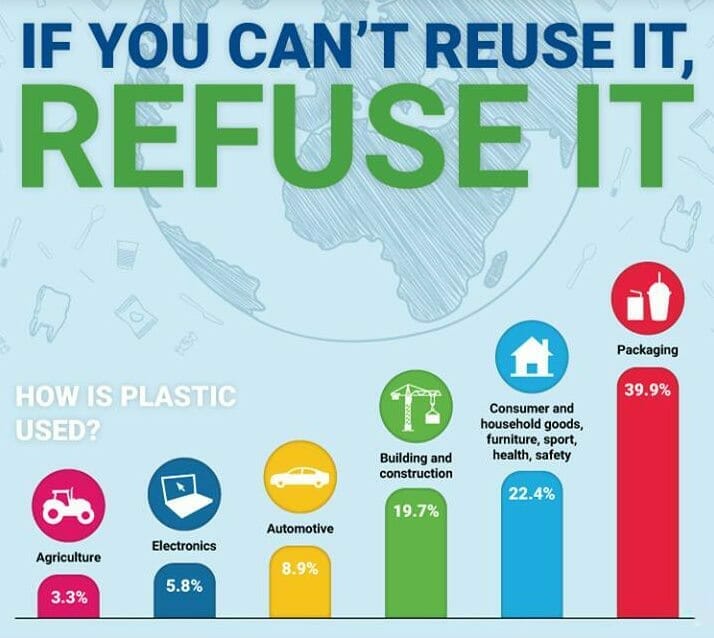
For more helpful information on zero waste living, check out the rest of our Blog!
Sources: greeneducationfoundation & theoceancleanup

Hi there! I'm Adam, author and founder of TGL. Since 2016, I've produced and sold non-toxic kitchenware throughout the US. Today, I'm using my passion and experience in sustainable product manufacturing to help families avoid unsafe reusable foodware. When I'm not writing, you'll find me hiking or camping throughout Appalachia!
Enjoyed this post? Share it with your friends!
Related Posts

